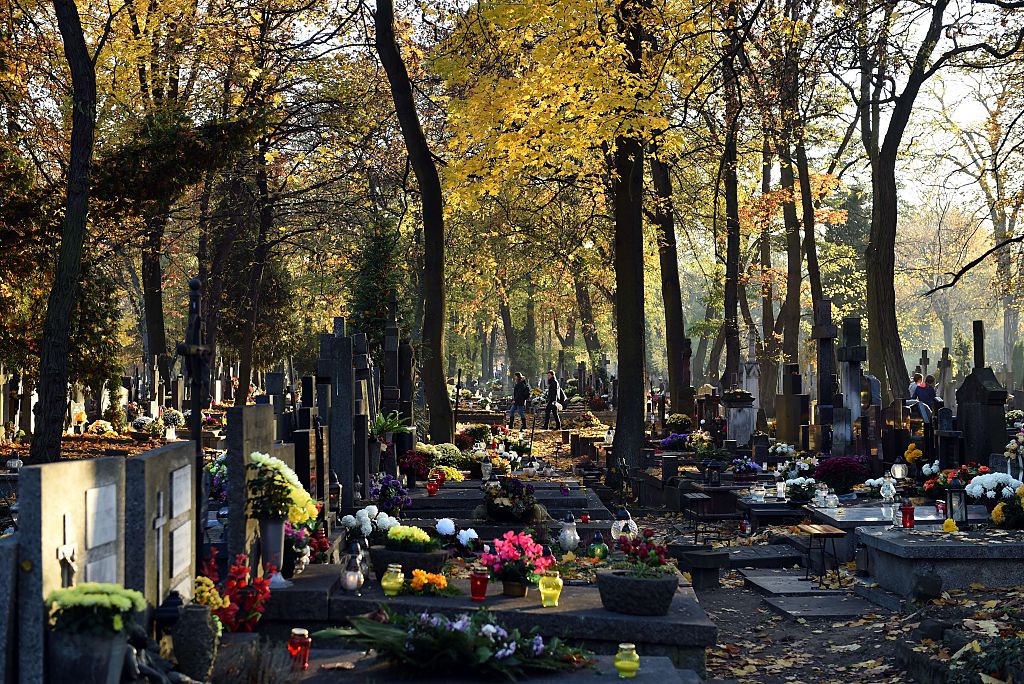The grave sweepers came early this year. When I visited one 18th century cemetery in Warsaw, half the tombstones had already been tidied and decked with pots of yellow chrysanthemums, well before All Saints’ Day. The other graves remained obscured by sodden piles of leaves. Many cemeteries may not see guests at all this year.
Traditionally, on the first day of November millions of Poles travel to their family tombs for All Saints’ Day – some traversing the entire country to reach rural resting places in ancestral hometowns. When they arrive, they lay new plastic flowers, throwing away last year’s imitations, by now turned pale yellow and fluorescent green. In cities public transport routes are rewritten to shuttle crowds between urban burial grounds.
At the cemetery gates, rows of street-sellers haggle over grave lanterns and entice mourners with saccharine snacks and doughy pastries.

Britain’s best politics newsletters
You get two free articles each week when you sign up to The Spectator’s emails.
Already a subscriber? Log in







Comments
Join the debate for just £1 a month
Be part of the conversation with other Spectator readers by getting your first three months for £3.
UNLOCK ACCESS Just £1 a monthAlready a subscriber? Log in